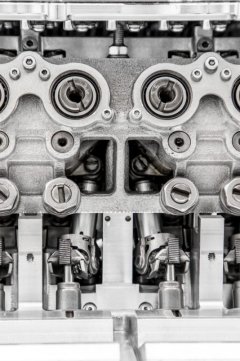guest76
Guest
- Joined
- Nov 5, 2012
- Messages
- 1,034
I have been watching this space for years with interest, and it seems there has been some good advancement recently by a UK company.
Great application for long distance trucks, where I dint see them easily being able to implement electric in lieu of diesel power very easily because of the challenges around range before recharge.
But it does also make me wonder if there would be an application for bikes too?
No cam, no chain, no followers, no pushrods, no rockers, no valve springs.
It’s quite an appealing idea in my opinion!
“British company Camcon Automotive has built the first fully electronic engine valve system, uncoupled from the crankshaft, that offers unprecedented control over the combustion cycle.”
https://newatlas.com/camcon-digital-iva-valve-system/55827/

Great application for long distance trucks, where I dint see them easily being able to implement electric in lieu of diesel power very easily because of the challenges around range before recharge.
But it does also make me wonder if there would be an application for bikes too?
No cam, no chain, no followers, no pushrods, no rockers, no valve springs.
It’s quite an appealing idea in my opinion!
“British company Camcon Automotive has built the first fully electronic engine valve system, uncoupled from the crankshaft, that offers unprecedented control over the combustion cycle.”
https://newatlas.com/camcon-digital-iva-valve-system/55827/

